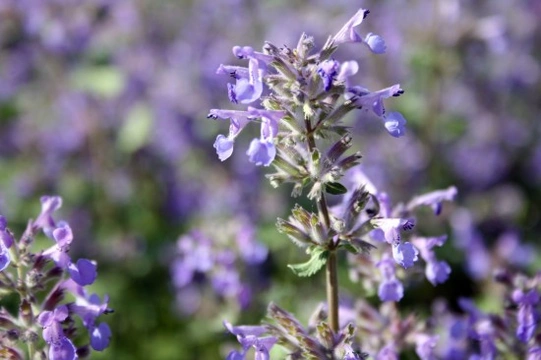Pets
Pets for studWanted petsBreedersAccessories & services
Knowledge hub
Support
Support & safety portal
Cats and Catnip
You’ve probably noticed the way your cat plays with some of his toys, first sniffing them enthusiastically and then rubbing his face (particularly his cheeks and his chin) on them, and then rolling around and purring loudly? This reaction is probably because the toy contains dried pieces of the plant commonly known as catnip or catmint, and although there are around 250 different varieties of catnip, the most common one is Nepeta Cataria. Catnip contains various aromatic oils including a mild hallucinogen called Nepetalactone, which is found in the leaves and stem, and is thought to be attractive to about two thirds of all members of the cat family, both wild and domestic. This stimulating effect lasts for about 15 minutes, during which time the domestic cat is often unwilling to share his toys with any of his feline companions, and may growl at anyone who tries to take them away from him. It is not known exactly why so many cats react to it although there is a sensory organ called the vomeronasal or Jacobson’s organ right at the back of a cat’s nose that triggers this type of smell-taste reaction when the cat presses his tongue against the roof of his mouth forcing air through this organ, until the catnip aroma is inhaled. You may also notice a strange, facial grimace, a bit like a crooked grin with his lips curled back and his mouth open when your cat inhales catnip, and this is an involuntary expression known as the Flehmen Response. Cats with one or both of the autosomal dominant genes will demonstrate these behavioural responses when exposed to catnip, but a few cats show no reaction to catnip whatsoever – the response factor seems to be hereditary, with some cats genetically ‘programmed’ to respond whereas some aren’t. The effect is not seen in young kittens, many of them avoiding contact with it until they are over three months old, and it often doesn’t have an effect on much older cats even if they previously used to respond to it as youngsters. Catnip is a perennial herb belonging to the mint family, and is most closely related to oregano and spearmint. It is a complex plant that also contains Acetic Acid, Citral, Geraniol, Dipentene, Citonellol, Nerol, Butyric Acid, Varleric Acid, and Tannins, and is indigenous to most of Asia and Europe, including Britain. Nepeta Cataria often grows as high as three feet, with clusters of small white, purple-spotted flowers and if you have a garden you can grow your own supply of catnip, taking care that it doesn’t take over by its rapidly spreading root system. However, it is commonly found in a wide variety of cat toys such as catnip mice and can also be purchased as a dry herb, to sprinkle on toys or shake onto a scratching post – but make sure you keep the opened packet well away from your cat, otherwise you may find him trying to break into your cupboards in order to gain access to it for himself as it does appear to be very compelling! If your cat has access to fresh catnip growing in your garden (or even in a neighbour’s garden!) you might see him sniffing and licking the plant, and even eating it and rolling over onto it! This reaction will last for up to 15 minutes, after which he may well lose interest and not show any interest in catnip at all for at least another hour. Cats generally look as if they are thoroughly enjoying themselves under this intoxicating effect, although may display a slightly ‘drunken’ gait immediately afterwards! But don’t worry about your cat’s reaction – it isn’t dangerous or addictive, and your cat isn’t about to turn into a feline drug addict! Although the reaction to catnip appears to resemble that of a female cat when she is ‘calling’ (or on heat), there is actually no connection as both neutered male and female cats, as well as entire cats, will respond in a similar way, and it isn’t considered to be a feline aphrodisiac. Very occasionally, exposure to catnip will cause an aggressive behaviour in cats, in which case it is best to avoid giving them catnip toys. However, if your cat eats the catmint (and cats often chew garden plants), it will have the opposite effect, and act as a mild sedative. However, it is not recommended to expose cats to catnip in order to counteract the stress caused by maybe a visit to the Vet or a long car journey, as it can lead to an unpleasant change in personality in these types of situation until the effect wears off.



